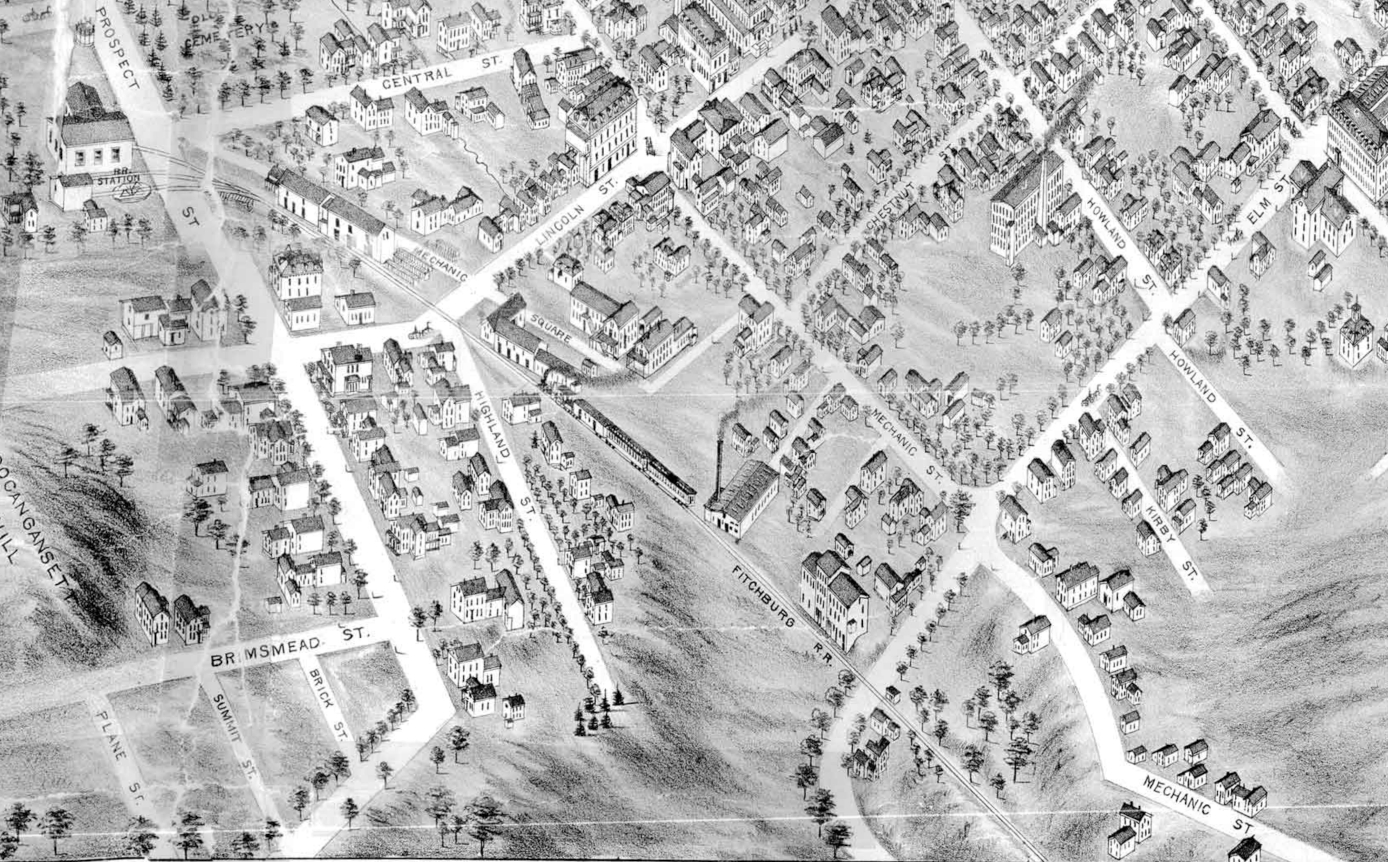Prospect Hill Historical Narrative
The ca. 45-acre area bordered north and south by Union and Lincoln Streets,
and east and west by Jefferson and Bolton Streets, is largely filled with
modest- to stylish wood-frame houses typical of the period from the Civil War
era through the early twentieth century. With the exception of three pre-1850
farmhouses on Union and Hudson Streets, Most of the area's older houses are
located in the southwestern part, on lower Highland, Jefferson, and Prospect
Streets. The side streets of the area's eastern section, developed between the
late 1880's and 1910, comprise one of Marlborough center's handsome
turn-of-the-century hill-top neighborhoods, where Brimsmead, Tremont,
Bicknell, and Short Streets, and Huntington and Estabrook Avenues march down
the southern slope of Prospect Hill.
 |
Although there is considerable alteration throughout the area, in the western
part, at least, there is a higher proportion of intact windows, doors, and
clapboard siding than in other sections of Marlborough center.
A roughly chronological description of street development shows some of the
architectural variety that is present here.
As the industrial and commercial development of Marlborough center expanded
in the latter part of the nineteenth century, residential neighborhoods spread
northward into the hilly farm country along the pre-1800 Elm, Bolton, Hudson,
Prospect, and Union Streets. Most of the land flanking Prospect Street and
stretching northwest up Prospect Hill to Union and Elm Streets, was owned by
members
|
|
of the Tayntor family. One of their farmhouses, part of which was
built in the early eighteenth century, still stands at 77 Hudson Street.
|
After the Civil War, much of the Tayntor land was subdivided
for houselots on the lower sections of Prospect and the new Highland and
Jefferson Streets, most of it by Hollis Tayntor (b. 1804), whose ca. 1870
house is located at 120 Prospect Street. By 1871, the five houses on lower
Jefferson Street, along with seven on Highland and fourteen on Prospect, and
86 and 90 Brimsmead Street, had all been built. Houses were beginning to
extend north along Bolton Street, as well. Brimsmead marked the southern
edge of an 85-10t subdivision on land belonging to Charles F. Morse, which
included three planned side streets on the top of Prospect Hill. (Except for
the south side of Brimsmead, however, none of this section was actually
developed until the mid-twentieth century.) Besides the Tayntors and
Charles Morse, in about 1880, J.S. Howe, of 93 Prospect Street, laid out
Bicknell and Tremont Streets, and extended Short Street north to Brimsmead.
Source: Marlborough Historical Society

